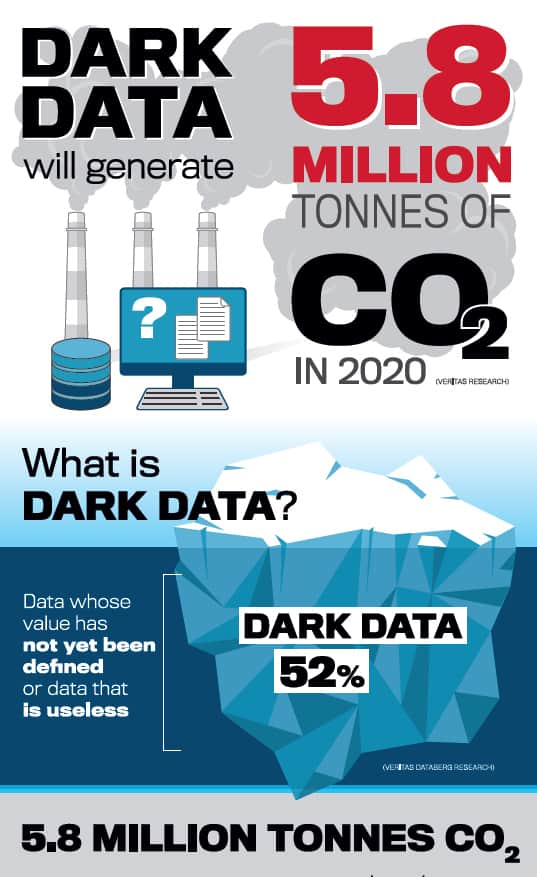Digitization has a dark side! Maybe even several dark sides but for this bit we look at data.
Digitization, the conversation of text, pictures or sound into a digital format for processing by computers, has a dark side. It is helping create a lot of digital data that must be stored somewhere and be accessible.
The storage and access of this massive data is contributing to the creation of data centres, which call them on-premise or cloud, produce carbon dioxide (CO2) because these machines need electricity to power and cool them.
Veritas estimates that 5.8 million tonnes of CO2 will be unnecessarily pumped into the atmosphere as a result of powering the storage of this kind of data this year alone. In order to protect the planet from this waste, businesses need to get on top of their data management strategies, use the right tools to identify which data is valuable, and rid their data centres of ‘dark data’.

The Databerg report: see what others don’t, says 52% of all data stored by organizations worldwide is ‘dark’ and those responsible for managing it don’t have any idea about its content or value. It also claimed that the environmental cost of dark data continues to be overlooked.
In the Seagate-sponsored report, the digitization of the world: from edge to core, IDC predicts that the amount of data that the world will be storing will grow from 33ZB in 2018 to 175ZB by 2025. Ravi Rajendran, vice president and managing director for Asia South Region at Veritas Technologies says that while organisations are working to reduce their carbon footprints, dark data doesn’t often feature on people’s action lists.
“However, dark data is producing more carbon dioxide than 80 different countries do individually, so it’s clear that this is an issue that everyone needs to start taking really seriously. Filtering dark data, and deleting the information that’s not needed, should become a moral imperative for businesses everywhere,” he commented.
According to a 2019 Cushman & Wakefield report, Southeast Asia will be the fastest-growing region for co-location data centres over the next five years, with an expected compounded annual growth rate (CAGR) of 13% from 2019 to 2024. With Singapore ranked the third most robust data centre market in the world, consider the carbon footprint that would be generated by Southeast Asia region alone.
The IT industry must get ahead of the challenge, since data volumes are getting bigger every year. IoT, fuelled by 5G, will comprise the lions’ share of the 175ZB of data IDC expects by 2025. Businesses need to understand this type of data, and the storage policies around it, so that we don’t see emissions spiral. Consumers also play a role because cloud storage is so cheap and available – thousands of videos and photos that will never be looked at, or emails that will never be read. Businesses and consumers everywhere need to learn how to manage their data for the sake of the planet.






